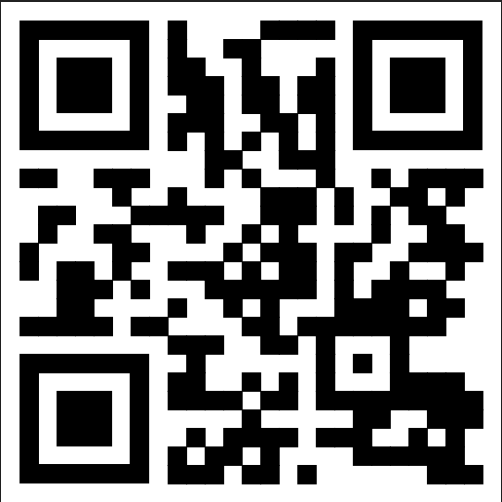While attendance rates, test scores and other easy-to-collect metrics have long been used to evaluate and inform education policy, actual student work is a major data void in most research studies. Although collecting, storing and analyzing hand-written student work presents logistical and technological challenges, new tools (scanning apps in particular) have emerged to simplify the process. Policy makers, educational leaders and teachers have an opportunity to push forward student work as a key data input for future research.

In this blog post, we’ll explore the benefits of hand-written student work compared to an increasing reliance on digital assignments (via Learning Management Systems like Google Classroom), and offer strategies for teachers to manage, save, and analyze hand-written student work as a structured data set.
If teachers, schools and districts are better equipped to systematically save and digitize hand-written student work, massive data sets will emerge to one day train artificial intelligence tutors and to improve content-specific professional development.
Student Work in Academic Research
The United States Department of Education (USDE) has cited research from studies analyzing student work. In its publication “What Works Clearinghouse: Procedures and Standards Handbook,” the USDE cites several studies that analyze student work as a key method for evaluating the effectiveness of educational interventions (U.S. Department of Education, 2019). Key findings include:
“The analysis of student work can provide valuable insights into student thinking and learning. By analyzing student work, educators and researchers can identify patterns in student reasoning and problem-solving strategies, better understand student misconceptions and errors, and tailor their teaching strategies accordingly.”
In the “National Assessment of Educational Progress (NAEP) 2019 Mathematics and Reading Assessments Report,” the USDE cites research on the use of hand-written student work to assess student thinking and reasoning in mathematics (National Center for Education Statistics, 2020). Key findings include:
“The use of hand-written student work in assessments can provide a more accurate measure of student thinking and reasoning than multiple-choice or other types of assessments. By requiring students to produce hand-written work, educators and researchers can gain insights into student thinking and problem-solving strategies that are not available through other assessment methods. By gaining a deeper understanding of student thinking and learning, educators can tailor their teaching strategies to address common misconceptions or errors and help students develop a more robust conceptual understanding of mathematical concepts.”
Digital Vs. Hand-Written Student Work
While digital assignments have many advantages, research shows that handwriting has significant benefits for students’ learning and development. Strategies for managing, collecting and storing hand-written student work for future research and analysis include:
1) Digitize/Scan hand-written student work
Scan or take a photo of each student’s hand-written work to create a digital backup. This will ensure that you have a permanent record of the work that can be easily accessed and shared with other educators or parents. We’ve included a list of scanner apps for your reference.
Check out this blog post on how to use these scanner apps to save hand-written student work to Google Classroom.

2) Create a rubric or checklist
Create a rubric or checklist to assess hand-written student work consistently. This will help you analyze the work more effectively and provide specific feedback to students. Education expert, Catlin Tucker, has great content on designing effective rubrics and her site includes free rubric resources. Further, teacherspayteachers.com has some great FREE rubric available here.

3. Involve students in the process
Involve students in the organization and analysis of their own hand-written work. Encourage them to reflect on their work and identify areas of strength and weakness. This will help students take ownership of their learning and develop important self-assessment skills.
Students can easily snap a photo or use a scanning app to submit hand-written assignments directly to Google Classroom and other Learning Management Systems. Allocate 5 minutes of scanning time at the end of each week for students to scan all the assignments for the week into Google Drive, Google Classroom, Dropbox or other cloud storage tools.
Why Is Hand-Written Student Work So Important?
In the transition to the current digital age, students are increasingly completing their assignments inside of Learning Management Systems. However, recent studies have shown that handwriting has significant benefits for students’ learning and retention.
Students in school districts that seek to better collect, manage and analyze hand-written student work will also benefit from the many positive effects of learning through physical writing. Let’s dive into some of the learning benefits students reap from handwriting their work.

Student Benefits of Hand-Written Student Work
Better Memory Retention
Research shows that writing by hand improves memory retention compared to typing on a computer. A study by Mueller and Oppenheimer (2014) found that college students who took notes by hand performed better on conceptual questions than those who typed their notes. The researchers suggest that the process of writing by hand engages the brain more effectively, leading to better retention of the material, and improved comprehension.
Handwriting engages multiple senses
Through handwriting, students engage their senses including touch, sight, and kinesthetic feedback. These sensory experiences can lead to better comprehension of the material. A study by Longcamp et al. (2008) found that children who learned to write by hand had better letter recognition and produced more words in a written task than those who used a keyboard. The researchers suggest that the kinesthetic feedback of handwriting may activate neural circuits in the brain that improve language learning and comprehension.
Increased Creativity
Handwriting allows for greater creativity and personal expression than typing. A study by Slepian and Ambady (2012) found that participants who wrote by hand were more creative than those who typed on a keyboard. The researchers suggest that handwriting may facilitate more fluid and flexible thinking, leading to increased creativity and originality.
Improved Fine Motor Skills
Handwriting requires fine motor skills, which are important for overall development and academic success. A study by James and Engelhardt (2012) found that children who practiced handwriting had better fine motor skills and letter recognition than those who did not. The researchers suggest that handwriting may promote the development of neural pathways that are important for fine motor control and overall cognitive functioning.
Use Technology to Aid Analysis
There are several technologies designed for teachers that can be useful for analyzing hand-written student work, such as gradedplus.app. Gradedplus.app is an app designed to help teachers and educators manage and grade student work more efficiently. The app includes a variety of features, including the ability to create assignments, grade student work, assign standards and provide hand-written feedback to students.
One of the key features of the app is the ability to scan and save hand-written student work, making it a great tool for managing and analyzing paper-based assignments. Using gradedplus.app, teachers can easily scan and save hand-written student work, allowing them to create a digital archive of student work that can be easily accessed and shared.
How GRADED+ Saves Teachers Time
By using the GRADED+ app, teachers can save time and improve the efficiency of their grading process. The platform streamlines the grading process and makes it easy to manage and analyze student work, especially hand-written assignments.
In conclusion, while digital assignments have many advantages, research shows that handwriting has significant benefits for students’ learning and development. Therefore, educators should consider incorporating more hand-written work into their lessons to help students achieve their full potential.
By using the strategies outlined above, including the use of scanning technology such as gradedplus.app, teachers can effectively manage and analyze hand-written student work. Further, school districts can begin the process of building a structured data set of actual student work to push educational researchers to use more concrete classroom data on student learning.



